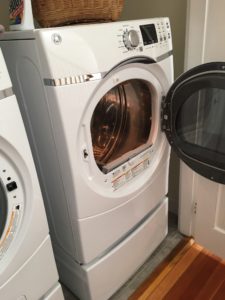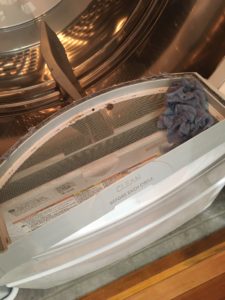Fire Safety. Start in the Laundry Room
Prevent House Fires and Property Damage

Fire safety begins in the laundry room. Yes, the laundry area. According to the National Fire Protection Association (NFPA) Dryer and Washer fires were the sixth leading cause of home fires between 2011 and 2015, causing more fires than candles, but less fires than space heaters. Dryers and washing machines were involved in one out of every 22 home structure fires reported to U.S. fire departments between 2006 and 2010. According to FEMA and NFPA , incidents involving clothes dryers peak in January. Keep your Maryland, Virginia and Washington D.C. area home safe by properly maintaining your appliances, including your washer and dryer.
A fire may start where you least expect it.
The Crilly Insurance Agency is dedicated to educating our customers on how to keep their family and property safe. As you get ready for colder weather and the winter months, now is a good time to check that you are properly maintaining your clothes dryer.
Neglecting to clean your dryer of dust, fiber and lint is the primary cause of dryer fires. Lint is highly combustible. A dryer clogged with lint can lead to reduced airflow, posing a fire hazard.
Follow these basic safety tips when using your washer and dryer.
- Don’t overload.
- Read and follow the manufacturer’s operating instructions.
- Don’t run the washer or dryer when you aren’t home or when you are sleeping.
- Keep the entire area clean and free of clutter, boxes and other materials.
- Don’t store items on the top of the washer and dryer.
- Consult the operating instructions prior to washing or drying an item that has been soiled with chemicals such as gasoline, cooking oil or paint.
Has Your Dryer Been Installed Properly?
Be sure to have your washer and dryer installed and serviced by a professional. Check your washer and dryer manuals to ensure that your electrical outlet is appropriate for your plugs.
If you have a gas dryer, have it inspected by a professional to make sure the gas line and connection areworking properly and don’t have leaks.

Clean the lint filter
Always clean the lint filter before drying each load of laundry. If you are drying a new item that creates a lot of lint, such as a bath towel or bath mat, consider drying it for half a cycle and then pause to clean out the lint filter before continuing to dry the item. Regularly check the dryer’s drum for lint accumulation.

Inspect the vent
The dryer vent is located outside of your house. It’s a good idea to periodically check to make sure air is coming out of the vent while clothes are drying. If no air is coming out of the vent, turn off the dryer and inspect the vent for blockage. Accumulated lint, a bird’s nest or even small animals can block vents.
Check the exhaust duct
Make sure the duct that runs from the back of your dryer to your wall and outside to your dryer vent isn’t clogged with lint or debris. If there is a blockage, you may have to remove the duct to clean it out. Consult with a professional before making any changes to your dryer’s exhaust duct.
At the Crilly Insurance Agency, 410-571-1771, your safety comes first. We are committed to providing you with useful information to help you keep your home safe. Visit our website at Crillyinsurance.com to read all of our blogs with news you can use.






